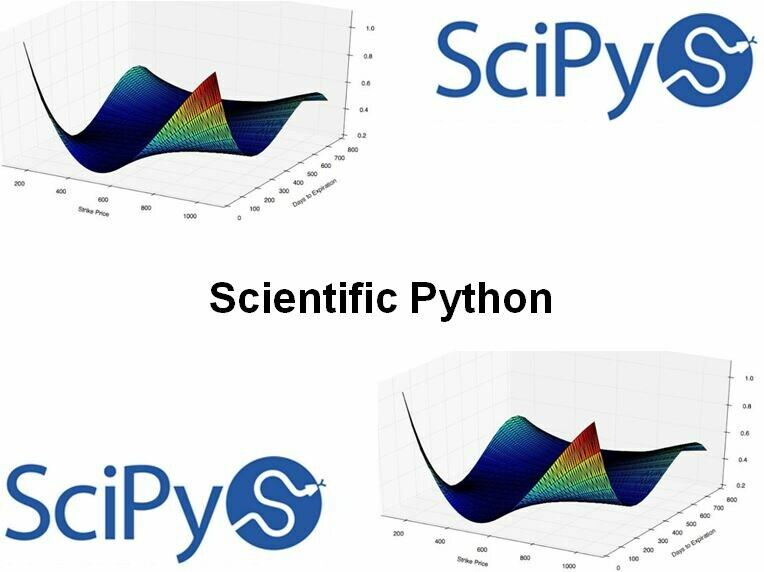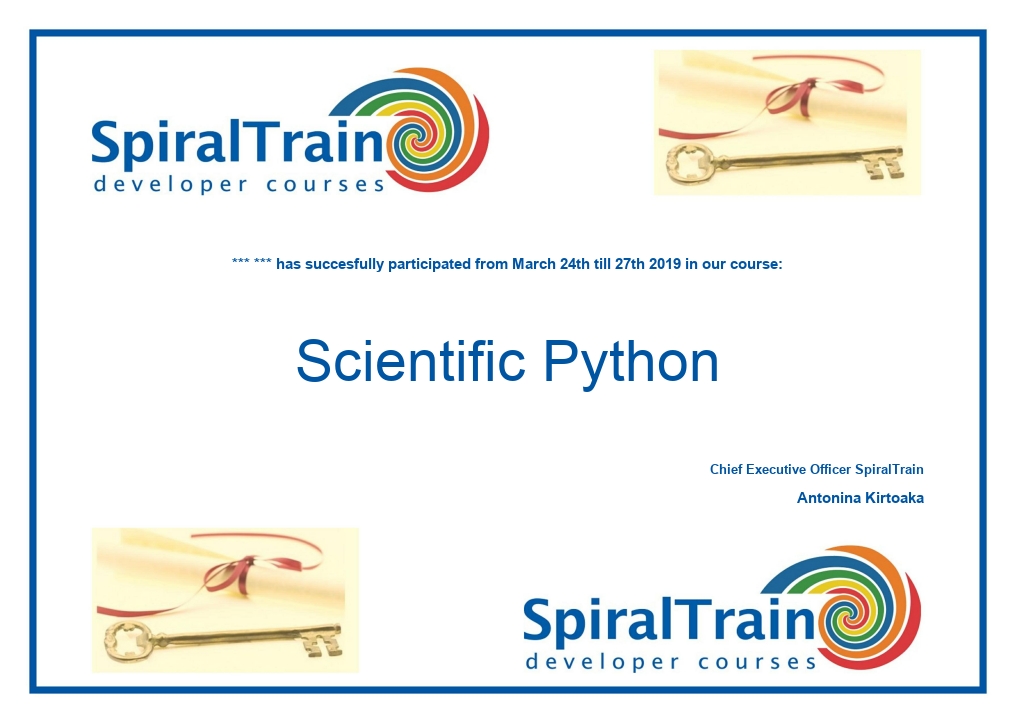-
Learning by doing
-
Trainers with practical experience
-
Classroom training
-
Detailed course material
-
Clear content description
-
Tailormade content possible
-
Training that proceeds
-
Small groups
In this course the participants will learn what can be done with the Python SciPy library for scientific computing.
The course starts with an overview of the role of matrices to solve problems in scientific computing.
Next the course proceeds by reviewing basic manipulation and operations on them, followed by factorizations, solutions of matrix equations, and the computation of eigenvalues and eigenvectors.
Also interpolation and approximation is treated where advanced techniques are shown to approximate functions and their applications in scientific computing.
Differentiation techniques to produce derivatives of functions are discussed as well as integration techniques showing how to compute areas and volumes effectively.
The module Computational Geometry takes a tour of the most significant algorithms in this branch of computer science.
And finally the course pays attention to statistical inference, machine learning, and data mining.
Scientists, mathematicians, engineers and others who want to use the SciPy Python library to create applications and perform data analysis.
Knowledge of Python programming and the NumPy library is required. Some knowledge of numerical methods in scientific computing is beneficial for the understanding.
The theory is dealt with on the basis of presentation slides. The concepts are illustrated with demos. The theory is interspersed with exercises. The course times are from 9.30 to 16.30.
The participants get well after completion of the course, an official certificate Scientific Python.

Module 1 : SciPy Intro |
Module 2 : Matrix Calculations |
Module 3 : Nonlinear Equations |
| What is SciPy Installing SciPy stack Anaconda distribution Constructing matrices Using ndarray class Using matrix class Sparse matrices Linear operators Scalar multiplication Matrix addition Matrix multiplication Traces and determinants Transposes and inverses |
Singular value decomposition Matrix equations Least squares Spectral decomposition Interpolations Univariate interpolation Nearest-neighbors interpolation Other interpolations Differentiation and Integration Numerical differentiation Symbolic differentiation Symbolic integration Numerical integration |
Non-linear equations and systems Iterative methods Bracketing methods Secant methods Brent method Simple iterative solvers The Broyden method Powell's hybrid solver Large-scale solvers Optimization Unconstrained optimization Constrained optimization Stochastic methods |
Module 4 : Computational Geometry |
Module 5 : Descriptive Statistics |
Module 6 : Inference and Data Analysis |
| Plane geometry Static problems Convex hulls Voronoi diagrams Triangulations Shortest paths Geometric query problems Point location Nearest neighbors Range searching Dynamic problems Bézier curves |
Probability Symbolic setting Numerical setting Data exploration Picturing distributions Bar plots Pie charts Histograms Time plots Scatterplots and correlation Regression Analysis of the time series |
Statistical inference Estimation of parameters Bayesian approach Likelihood approach Interval estimation Frequentist approach Bayesian approach Likelihood approach Data mining Machine learning Trees and Naive Bayes Gaussian mixture models |
Module 7 : Mathematical Imaging |
||
| Digital images Binary Gray-scale Color Alpha channels Smoothing filters Multivariate calculus Statistical filters Fourier analysis Wavelet decompositions Image compression Image editing Rescale and resize Swirl Image restoration Noise reduction |
